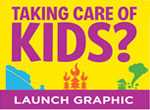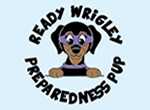St. Christopher’s Hospital for Children: Dr. Turchi’s Story
Healthcare providers can use different tools to help patients with special health care needs prepare for an emergency. A patient registry can help nurses, doctors, and other providers identify and reach out to families and ensure they have needed supplies and technology during an emergency.

St. Christopher’s Hospital for Children, Philadelphia, PA
When the threat of Hurricane Sandy became a reality, Dr. Renee Turchi and her team at The Center for Children and Youth with Special Health Care Needs at St. Christopher’s Hospital for Children in Philadelphia wanted to be certain that the children and their families were prepared.
One of the tools that the team used was a patient registry. The patient registry is a complete list of all children and youth with special health care needs who are cared for at the center and includes the following:
- Name
- Patient identification number or medical record number
- Date of birth
- Diagnoses
- Severity of child/youth condition
- Indication of social stressors
- Technology supports needed
- Home nursing and medical equipment needed
- Insurance
- Health provider
The hospital also used “care coordinators” to assist families during the emergency. “Using a patient registry to identify patients and employing care coordination were vital in working with children and youth with special health care needs during Hurricane Sandy. Our care coordinators and social workers are the most valuable players in our office,” says Dr. Turchi. During a child’s first admission to the hospital, a care coordinator has all families contact local first emergency response agencies (e.g., police or fire department) alerting them of their child’s special health care needs. “My role is to reach out to families, ensuring they get what they need. Children requiring technology support are especially vulnerable. Working with these children and their families before a potential disaster was critical as opposed to following up after the event. I was so happy that none of the patients ended up in shelters or placement,” says Monica, a care coordinator at the center.
In addition, all patients requiring technology support (e.g., oxygen, ventilators, or medication requiring refrigeration) have a care plan developed that includes information such as:
- Diagnoses
- Surgeries
- Relevant past medical history
- Medications
- Allergies
- Home nursing
- Therapies (physical, occupational, or speech therapy)
- Education needs and supports
- Durable medical equipment needed and supplying company
- Insurance info/coordinator
- Alternative therapies
- Services and providers (including specialists and community partners)
- Child’s needs and strengths
In the days leading up to Hurricane Sandy, the center’s care coordinators immediately used their patient registry to identify and reach out to the children and youth with technology support needs. The care coordinators called families with any technology support needs and reminded them to:
- Have a 2 week supply of medications (prescription and non-prescription)
- Store a 2 week supply of medical equipment and supplies [e.g., diapers, dressings, syringes (for gravity feeding in place of feeding pumps), or feeding bags]
- Store a 2 week supply of food, especially if the child has a special diet
- Purchase battery back-up, 12 volt inverter for cars, and/or a generator
- Charge all back-up batteries
- Identify family, friends or a disability-friendly shelter
- Have an updated copy of their complete care plan with them
- Call the office with any concerns, needs, and questions
In some cases, families were without power for up to five days following the storm. Many families were in constant contact with the center during this time. “Only one family had to come to the emergency department for lack of access to power for a prolonged period, and the family was able to get home within one day,” says Dr. Turchi.
It is critical that all children and youth have access to a medical home, but especially those children and youth with special health care needs. Using tools and team based care is essential in having the best outcomes for these children in disasters.
For more information about ways hospitals can get prepared for an emergency, visit: http://www.cdc.gov/phpr/healthcare/hospitals.htm
- Page last reviewed: July 26, 2017
- Page last updated: April 27, 2017
- Content source:


 ShareCompartir
ShareCompartir



